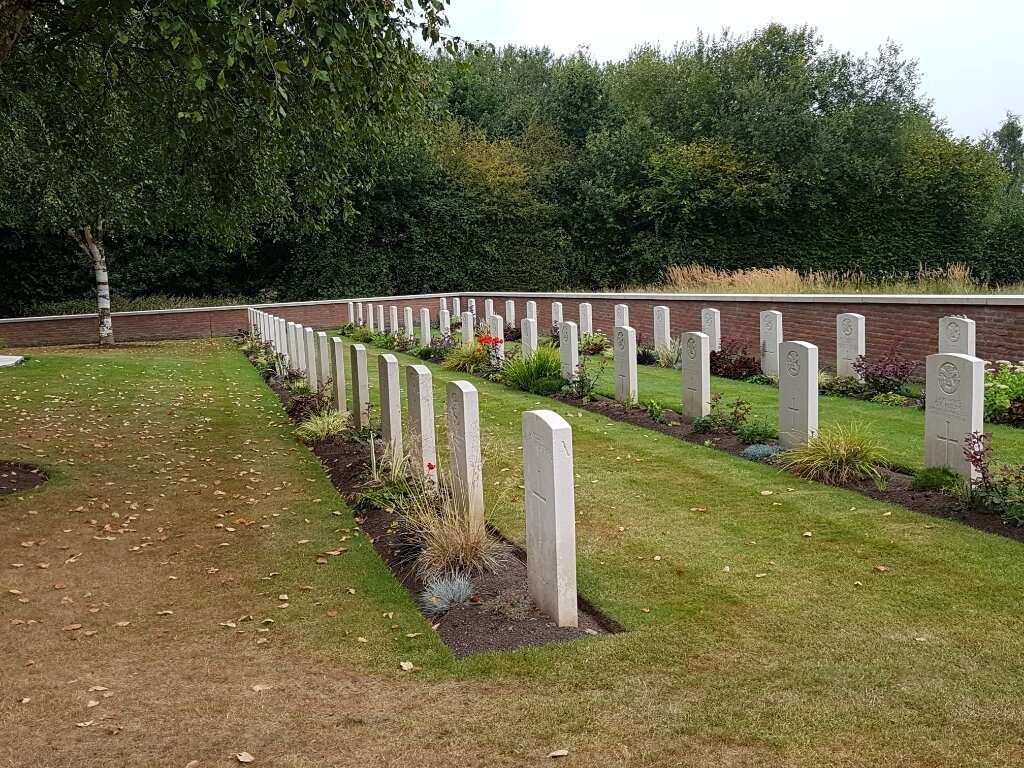First D.C.L.I. Cemetery, The Bluff
- Country Belgium
- Total identified casualties 63 Find these casualties
- Region West-Vlaanderen
- Identified casualties from First World War
- GPS Coordinates Latitude: 50.8209, Longitude: 2.91325
Location information
First DCLI Cemetery is located 4 km south east of Ieper town centre, on the Verbrandemolenstraat a road leading from the Komenseweg, connecting Ieper to Komen (N336).
From Ieper town centre the Komenseweg is located via the Rijselsestraat, through the Rijselpoort (Lille Gate) and crossing the Ieper ring road, towards Armentieres and Lille. The road name then changes to Rijselseweg. 1 km along the Rijselseweg lies the left hand turning onto Komenseweg.
2.5 km along the Komenseweg lies the right hand turning onto the Vaartstraat. 900 metres along the Vaartstraat lies the left hand turning onto the Verbrandemolenstraat. 400 metres along the Verbrandemolenstraat a short distance from the road is the cemetery.
Visiting information
Visitors to this site should note the 100 metre grassed access path leading to this cemetery which is not accessible by vehicle.
Wheelchair access to cemetery is possible via the main entrance. For further information regarding wheelchair access, please contact our Enquiries Section on telephone number 01628 507200.
History information
The commune of Zillebeke contains many Commonwealth cemeteries as the front line trenches ran through it during the greater part of the First World War.
The trenches of the 14th (Light) Division on the narrow ridge known as the Bluff were captured by the Germans in February 1916, and retaken by the 3rd Division on 2 March. In the following July the Germans blew a mine under it, but failed to capture the ground. It was given up in the spring of 1918, but regained by the 14th Division on 28 September.
The First D.C.L.I. Cemetery dates from a period earlier than the fighting of 1916. It contains the graves of officers and men of the Duke of Cornwall's Light Infantry (one of whom had just obtained a commission in another Regiment) and other soldiers, all of whom died in April-July 1915. Row D was added after the Armistice when graves were brought in from the battlefield.
The cemetery now contains 76 First World War burials, 13 of them unidentified.
The cemetery was designed by J R Truelove.



